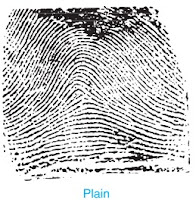Ceramics: Properties, Application and Classification of Ceramics
What is Ceramic?
A ceramic is an inorganic, non-metallic solid mainly based on oxide, nitride, boride, or carbide that are shaped and then fixed at high temperatures. Ceramic is hard, brittle, heat-resistant, and corrosion-resistant.
Ceramic is used almost everywhere like in kitchens, cookware, pottery, bricks, pipes, etc.
Many ceramics contain a mixture of ionic and covalent bonds between them. That's why they exist in crystalline, semi-crystalline, and vitreous form.
Properties of Ceramics
1. Ceramics have high hardness.
2. They are brittle and have poor toughness.
3. They have a high melting point.
4. They have poor electrical and thermal conductivity.
5. They have low ductility.
6. They have a high modulus of elasticity.
7. They have high compression strength.
8. They show optical transparency to a variety of wavelengths.
Application of Ceramics
1. Silicon carbide and tungsten carbide are technical ceramics that are used in body armor, wear plates for mining, and machine components due to their high abrasion resistance.
2. Uranium oxide (UO2) is a ceramic that is used as a nuclear reactor fuel.
3. Zirconia is a ceramic that is used to make ceramic knife blades, gems, fuel cells, and oxygen sensors.
4. Barium titanate is a ceramic that is used to make heating elements, capacitors, transducers, and data storage elements.
5. Stealite is a ceramic that is used as an electrical insulator.
Classification of Ceramics
1. Classification based on the composition
1. Oxide ceramics
Oxide ceramics contains oxide fibers which include a combination of Zirconium dioxide, aluminum trioxide, and titanium dioxide. The oxide fibers help ceramics to withstand oxidation and provide strength and reinforcement.
Following are some types of oxide ceramics:
1. Alumina Ceramics
Alumina ceramics have high chemical resistance, increased strength, and high-temperature resistance. Alumina ceramics can be manufactured from its powder form then corresponding it and then fired overheat.
The final product is rough which can be smoothened using silica coating which further enhances its strength.
2. Beryllium oxide ceramics
Beryllium oxide ceramics have good thermal conductivity, high insulation, low dielectric constant, low medium loss, and good process adaptability.
Beryllium oxide ceramics are used as a component in glass and that glass is used to make X-ray tubes which are used for medical purposes.
Beryllium oxide ceramics are also used for high-power microwave packaging and high-frequency transistor packaging due to their good stability and insulation properties.
3. Zirconia Ceramics
Zirconia ceramics are less brittle than other ceramics and have low thermal conductivity, excellent thermal insulation, and very high resistance to crack propagation. They are used for protective coatings, dental services, and making ceramic knives.
2. Non-oxide ceramics
Non-oxide ceramics offer a great replacement to oxide ceramics because oxide ceramics can't be used in extreme environments and can't bear heavy loads.
Non-oxide overcomes all these limitations of oxide ceramics because they have high corrosion resistance, hardness, and oxidation resistance. They even don't degrade till 2400 C temperature.
Following are the two most common types of non-oxide ceramics:
1. Silicon nitride ceramics
Silicon nitride ceramics have low density, high fracture toughness, good flexural strength, and excellent thermal shock resistance.
Silicon nitride ceramics are used for rotating bearing balls and rollers, cutting tools, moving engine parts, turbine blades, and weld positioners.
2. Silicon Carbide Ceramics
Silicon carbide ceramics are much lighter and harder than other ceramics and are resistant to acid. They have a low thermal expansion, high conductivity, and are chemically stable.
They are used for making fixed are moving turbine components, suction box covers, seals, bearing, ball valve parts, and heat exchangers.
3. Composite Ceramics
Composite ceramics is made up of two or more constituent materials with different physical or chemicals properties.
These materials combine to produce a material having different properties than individual components. Composite ceramics have ceramics fibers embedded in the ceramic.
Following are the composite ceramics:
Fiber-Reinforced Ceramics
Fiber-reinforced ceramics is also known as ceramic matrix-fiber composite. It has increased toughness, high strength, and polycrystalline structure.
Due to their ability to resist high temperature and resistance, they are used in heat shield systems like burners, flame holders, and hot gas ducts.
2. Classification based on Applications
Classification of ceramics can be given on how they are used:
1. Structural Ceramics
Structure ceramics are clay-based (generally) which are pressed into shape according to our need. They have good insulating properties which can be altered by changing their density. The denser the ceramic, the lower the insulating properties.
Structural ceramics includes bricks, dinner bricks, dinner plates, and statues.
2. Refractory Ceramics
Ceramics that can hold their shape and strength at high temperatures are called refractory ceramics. That's why they are used in furnaces and kilns. They are made using oxide like silicon dioxide, titanium dioxide, zinc oxide, and many other oxides.
3. Electrical Ceramics
Electrical ceramics or electroceramics are known for their excellent electrical properties. They have good mechanical, thermal, and electrical properties which make them versatile for use. The conductivity of electrical ceramics increases when the temperature increases.
For example Dielectric ceramics, fast ion conductor ceramics, etc.
4. Magnetic Ceramics
Magnetic ceramics are oxide materials that show a certain type of permanent magnification (ferrimagnetism).
Magnetic ceramics are made up of ferrites which are crystalline minerals composed of iron oxide combine with some other metal. Magnetic ceramics are used in a variety of places like in transformer, telecommunication, and information recording.
5. Abrasives Ceramics
Abrasives ceramics can be natural or synthetic which are used to grind or cut away other softer material. They have high hardness, wear-resistance, and high toughness.
For example, Diamond, Silicon carbide (SiC), tungsten carbide (WC), etc.





